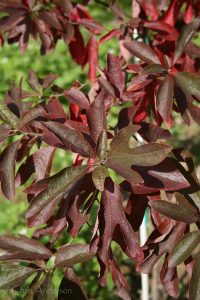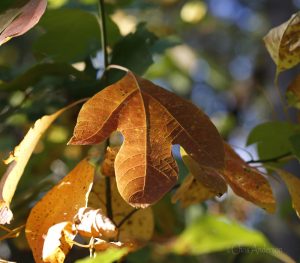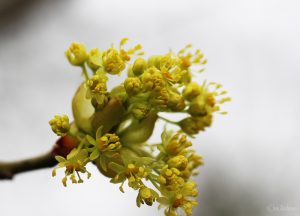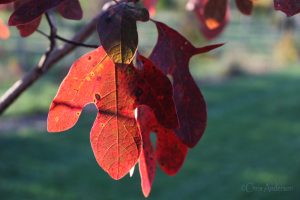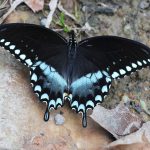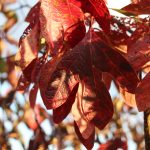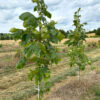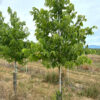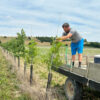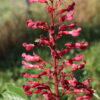As autumn descends on the Shenandoah Valley and trees don their bright attire before resting for winter, one understory tree can’t decide on what shade it wants to wear so displays them all – from lemon yellow and peach to russet and bright red: the diminutive sassafras (Sassafras albidum) is a delight with its interesting leaves, graceful branch structure and small stature.
They tend to form thickets with multiple trunks but rarely reach heights of more than about 40 feet, however, the largest known specimen in Virginia grows in Lee County with a height of 65 feet and a circumference of over 18 feet and is featured in the book Remarkable Trees of Virginia.[1] The national champion resides in Davies, Kentucky and was nominated in 1954.
Sassafras prefer dappled sun to shade and are tolerant of most well-drained soil types, however, care should be taken to avoid heavy or clay soils as root rot can occur in such conditions. They tend to be fairly care-free once established and are moderate to fast growers.
Every part of the tree is fragrant and produces blue-black berries favored by birds. They are dioecious, so, if providing berries is a goal for wildlife, both a male and a female tree are needed.
Belonging to the family Lauraceae, they are unusual in that each tree can have three leaf shapes – oblong, mitten-shaped and three-pronged.
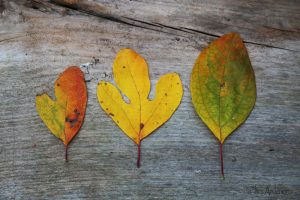 ‘Almost every part of the plant is useful in one way or another,’ writes Nelson Coon in his book Using Wild and Wayside Plants’[2] He notes that the dried leaves are commercially produced as one of the signature ingredients in New Orlean’s gumbo and known as filé.
‘Almost every part of the plant is useful in one way or another,’ writes Nelson Coon in his book Using Wild and Wayside Plants’[2] He notes that the dried leaves are commercially produced as one of the signature ingredients in New Orlean’s gumbo and known as filé.
Sassfrass is a flavoring in rootbeer and gumdrops and used to fragrance soap. As reported by early European colonists, the tree was called winauk by Native Americans in Virginia and Delaware.
Native tribes shared their knowledge of the usefulness of the roots, bark and leaves with Europeans who then recognized its economic value. The search for stands encouraged Europeans to encroach on Native lands and to begin exporting the parts of the tree since the essential oils ‘were believed to cure everything from lameness to liver aches’[3]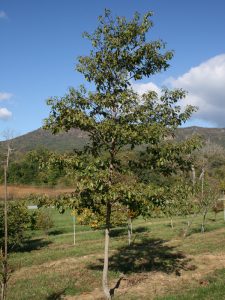
For a splash of color in the landscape, planting sassafras under several red maples or hickories combined with sumac would create a vibrant focal point. A backdrop of dark green evergreens like cedar or pine would highlight the brightly colored autumn foliage.
Chris Anderson, Executive Director
White House Farm Foundation
Luray, VA 22835
- Sassafras is a host to the spicebush swallowtail (above), cecropia and promethia moths
- Brilliant fall foliage colors
[1] Hugo-Ross, N & J. Kirwan, 2008. Remarkable Trees of Virginia, Albemarle Books, Virginia, p. 64-65.
[2] Coon, N., 1957, Using Wild and Wayside Plants, Dover Publications, Inc., New York, p.130
[3] Hugo-Ross, N & J. Kirwan, 2008. Remarkable Trees of Virginia, Albemarle Books, Virginia, p. 64-65.


